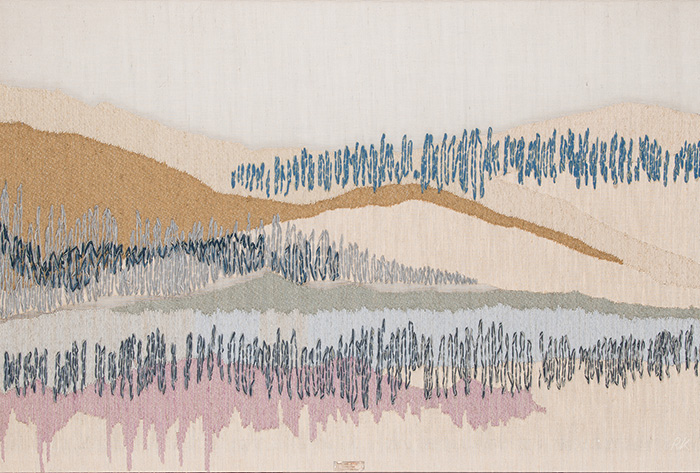Ryijys have been made and used throughout history at least from the Viking ages, but the oldest preserved Finnish ryijy is from the 17th century when ryijys were used by royalties and the rich as bed covers. With the nationalistic ideas of the 19th century, a new interest was aroused in Finland to preserve and to pass on the traditions of handicraft that were starting to be forgotten. In 1897, The friends of Finnish handicraft were founded and began working with reviving the traditional ryijys by remanufacturing traditional ryijys and by create new ryijy designs in a nationalistic style.
In the 1920’s The friends of Finnish handicraft had their first ryijy design competition, with which they wanted to bring young and talented textile designers to the spotlight. These young designers combined the old traditional motifs with the international style influences in their works to create the new ryijy. During the 1920’s the way of using ryijys also changed, and from being a bed cover the ryijy now became a tapestry or rug and therefore became a active part of the interior design.
Read more
In the 1920’s The friends of Finnish handicraft had their first ryijy design competition, with which they wanted to bring young and talented textile designers to the spotlight. These young designers combined the old traditional motifs with the international style influences in their works to create the new ryijy. During the 1920’s the way of using ryijys also changed, and from being a bed cover the ryijy now became a tapestry or rug and therefore became a active part of the interior design.
During the Finnish interwar period, the value of the ryijys rose thanks to handicraft and textile art became the leader of the Finnish industry of arts and crafts. It was also now that he folk-art style of the ryijys started to change into a more minimalistic and practical style. The style influences of the 1920’s from art deco to functionalism was received with open art by the textile designers and influenced greatly the style of the ryijys, which was not the case with most of the other art forms in Finland. The straight lines and arranged squareness were easily adapted with the ryijy technique and the motif world of Finnish ryijys. Elsa Kallia, one of the first ryijy designers for The friends of Finnish handicraft, sectioned the the base colours of her functionalistic ryijys in rectangular shapes in different sizes and colours and created so vivid expressions in her ryijys.
Even though many textile designers aimed to create totally minimalistic motifs there were those that preferred poetic motifs such as Eva Anttila and Margareta Alstedt-Willandt that created fairy tale-like and detailed motifs. The ryijy “The three wise men” by Alhstedt-Willandt for Neovius narrate the journey of the Three wise men in the center of the ryijy and around them the wilderness is pictured as horizontal stripes in different colours. Lastly the ryijy is framed by a garland of flowers, typical for Alstedt-Willandt ryijys.
The popularity of the ryijys reached their height during the 1930’s when they became a self-evident part of the interior designs in Finnish homes. The ryijy was usually the centre object and the colours and furniture were chosen and placed to suit the ryijy. Smaller ryiys and ryijy pillows, like Armi Ratia’s pillow ‘Kukkaistuli’ for Neovius, replaced the big ones in smaller apartments in the cities. Armi Ratia, the founder of Marimekko, started her carrier as a ryijy and textile designer. The ‘Suopursuja’ ryijy by Aksel Wilhelm Ratio was also a small ryijy designed for the city apartments. Raitio, working for Neovius, designed many ryijys and usually they depicted scenes from Kalevala.
After the Winter and Continuation war the style of the Finnish ryijys changed once more and bright colours, energy and movement in the motifs were preferred. In the Finnish textiles auction these kinds of ryijys are represented by among others Ritva Puotila’s and Terttu Tomero’s ryijys. Puotila became known in the 1960’s when she took part of The friends of Finnish handicraft’s design competition. Characteristic for Puotila’s ryijys are her use of bright, vivid colours. In her ‘Blue Well’ the center is dominated by two circles surrounded by countless different shades of blue. The bright colours of the 1960’s is also found in Tuomero’s ryijys.
During the 1970’s to 1990’s the size of the ryijys became smaller and resembled more than ever modern paintings, a feature found in Eine Hietanen’s and Raija Rasta’s ryijys that are for sale in the Finnish textiles auction. At the same time ryiys also became more and more three dimensional by using different kinds of material in the ryijys and by cutting the tuft in different lengths or by only having tuft on parts of the ryijy.

































































